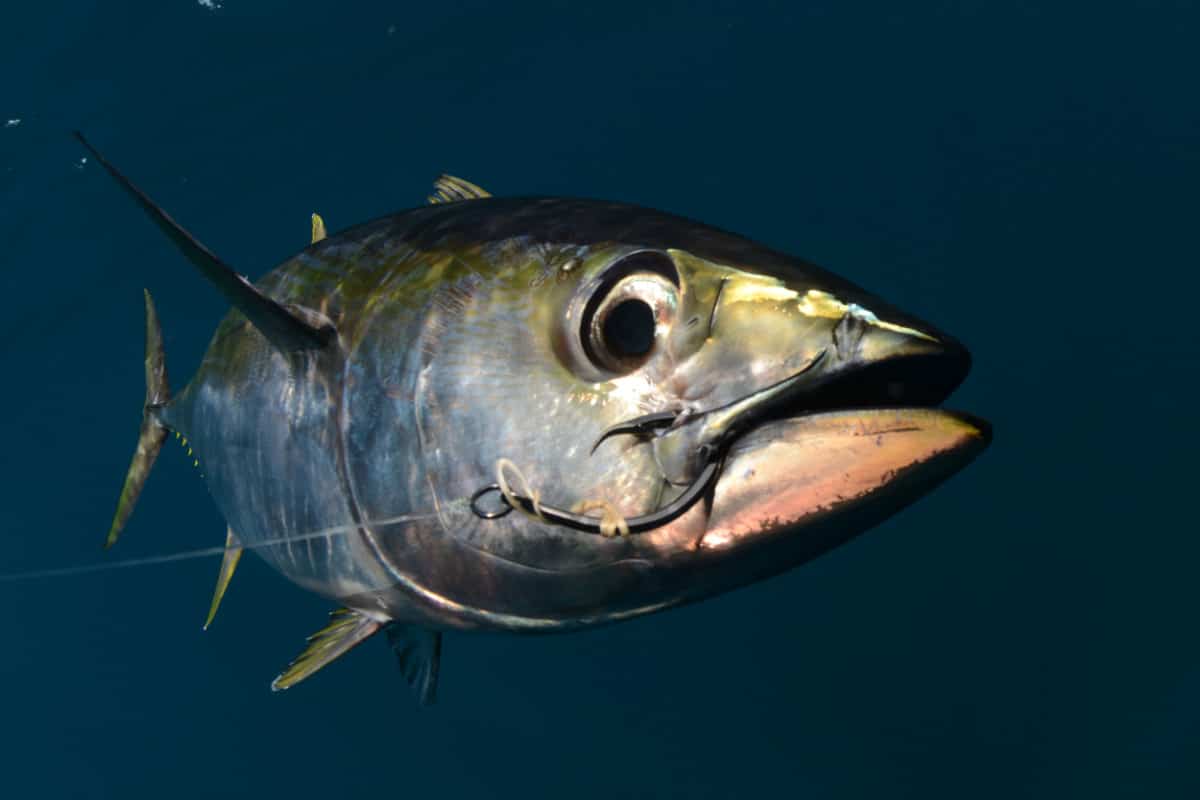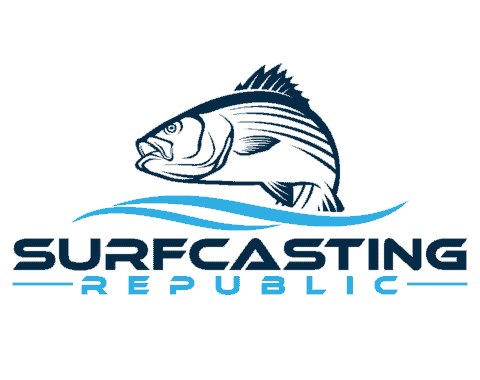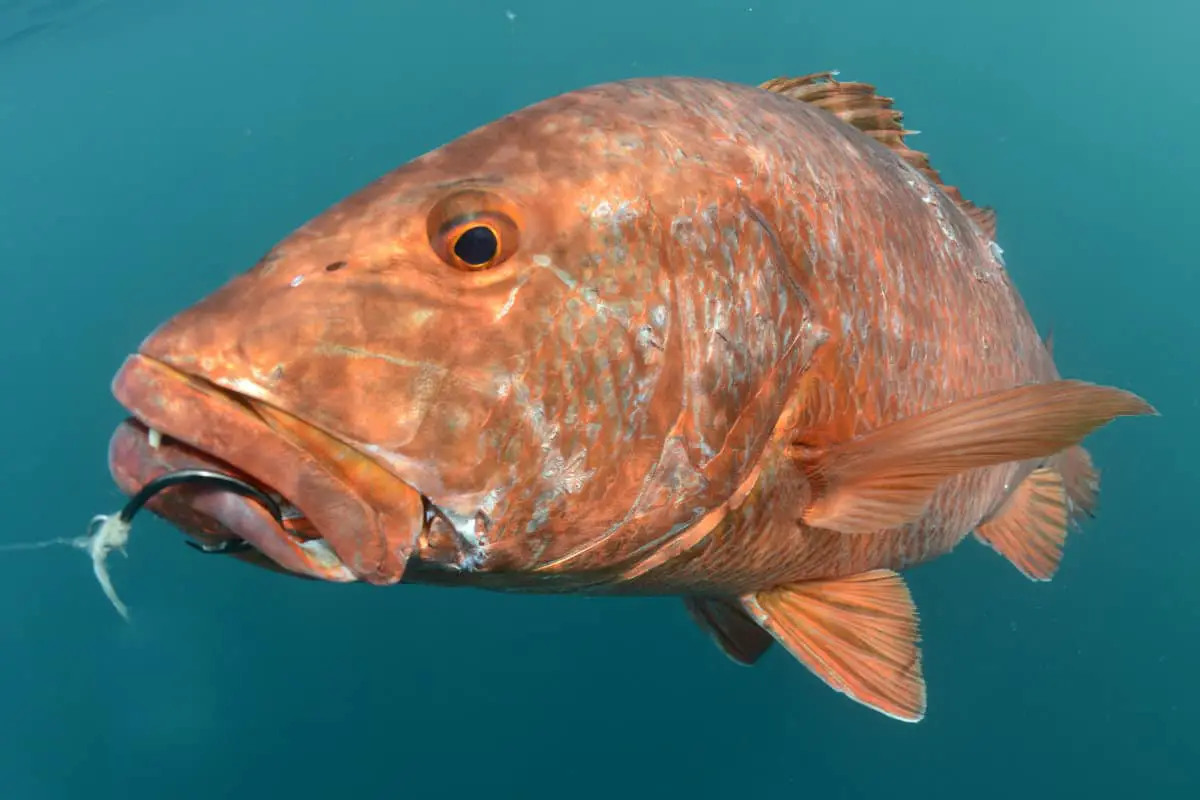One of the great debates among anglers is whether or not circle hooks are worth the learning curve. Many anglers grew up using J-hooks, but once you start coming into your own as an angler, circle hooks will become more commonplace in your fishing gear.
I love using circle hooks because they detach easily, and fish won’t usually swallow them, which significantly reduces the chance of gut-hooking. But, they do have their drawbacks, and people often get confused when it comes to determining the right size.
In this article, we will cover:
The 10 Pros And Cons of Circle Hooks For Surf Fishing: With Size Guide
Pros
- They Avoid Gut Hooking Exceptionally Well
- They Provide Easy Detachment
- They are Safer to Use
- They are Environmentally Friendly and More Sustainable
- They Have a Great Hold Rate
- There is No Need For Hook Setting
Cons
- The Hook Setting Differs from J-Hooks
- They are Not Ideal for Artificial Lures or Fast Baits
- They are Ineffective for Fast Surface Fish
- They are More Difficult to Setup with Larger Bait
Keep reading to get the details on each of the ten factors and pick the right-sized circle hook for your angling needs.
What Are Circle Hooks?
A circle hook is pretty much your average hook just shaped more like a circle. So the next time you’re shopping for hooks and see some rounded ones don’t just assume they are bent or out of shape.
Not all hooks are J-hooks, despite what most of us grew up using.
The sharp, curved back of a circle hook makes it ideal for anglers and has gained massive popularity in the last decade. When used correctly (see below for more), the hook lands more fish on average.
In other words, it’s not that you’ll catch more fish, but the fish that do bite are more likely to stay hooked while you are reeling them in.
The shape is such that it allows fish to bite the bait without swallowing the hook, and its rounded back makes it so the lip of the fish gets caught and won’t detach. It’s pretty much any angler’s dream!
How to Use Circle Hooks?
This part is mostly for novices and amateurs. If you are a seasoned angler, you may find this section a bit boring, so just skip down. Using circle hooks is simple, but you may be confused the first time you try to use one.
So, here is a quick how-to on using the hooks to maximize your chances of catching a fish while not losing your bait.
- Set up your hook as you would typically do by tying it to your line.
- If you use multiple hooks on a line, space them out adequately, at least 7 inches from one another.
- Placing your bait is where it gets a little tricky. You don’t want to cover the tip of your hook. Get whatever bait you’re using on the inner portion of the hook and pierce it on the hook, then move it around the angle it to where the hook starts. You want to leave a tip completely exposed—more on why later.
- You can add multiple pieces of the bait as the length of the hook permits, making sure you don’t cover the hook’s tip.
Quick Tips For Using Circle Hooks
Here are some quick tips that will help you use a circle hook for the first time without any issues.
- If you have a long thin piece of bait, consider piercing the end of it and then wrapping it back by folding the bait to hook it once or twice more.
- If you have a long thin piece of bait, consider piercing the end of it and then wrapping it back by folding the bait to hook it once or twice more.
- If you have a long thin piece of bait, consider piercing the end of it and then wrapping it back by folding the bait to hook it once or twice more.
- If you have a long thin piece of bait, consider piercing the end of it and then wrapping it back by folding the bait to hook it once or twice more.
- If you have a long thin piece of bait, consider piercing the end of it and then wrapping it back by folding the bait to hook it once or twice more.
This is not an all-inclusive and exhaustive “how-to,” it’s a good start, but if you want to get to know it all, I recommend watching this guy and trying them out on your own in the open water. Nothing beats experience.
Offset vs. In-Line Circle Hooks
Both J-hooks and circle hooks have an offset and in-line (or non-offset) version. Which you choose will depend on your style of fishing and your personal preference. There’s no wrong choice.
Offset, and non-offset hooks are almost identical, except that for the fact that in-line varieties have a hook that runs parallel to the shaft while the hook on offset styles tilts towards one side.
To tell the difference, you need to grab the hook and tilt it so that the hooks curve, angle, tip, and base all align.
- If they form a straight line, you know it’s an in-line hook.
- If the tip of the hook is angled toward one size, then it is an offset hook.
Offset hooks are used to grip the bait and latch onto fish for a guaranteed grab. This is great if you’re bringing your fish home, but if you’re going to release the fish back into the open water, then stick with an in-line circle hook.
Circle hooks are relatively new to the market, and you would have to go to a store that specializes in bait and tackle to find an offset hook, but if you really need one, they are out there!
How to Pick the Right Circle Hook: Size Guide
Before we get into the pros and cons of using circle hooks, let’s take a look at an easy to use size guide.
Choosing the right hook size is always tricky, even for circle hooks. The dimensions are measured using a standard scale, but just like with shoes, the size rating doesn’t always translate across brands.
Some manufacturers base their measurement on the circle-gap size while others base it on the length of the hook.
Sizes descend from 0 to whole positive numbers and ascend on an “aught” scale. Bigger numbers equate to smaller hooks and vice versa.
So, on the lower end of the scale, you start at one and go down to 32 (size rating numbers increase in increments of 2 after size 6), whereas on the higher end of the scale, you have 1/0 to 20/0.
The 0 is pronounced “aught” because the larger hooks are on the aught scale or measurement system.
To recap:
A size one hook is larger than say a 4 or 30, and a 1/0 is smaller than a 3/0 or 18/0. However, a 1/0 is larger than a size 1 hook.
These sizes are universal for almost all types of hooks. For the most part, novices will struggle, but when you’re a seasoned angler, you pretty much know what your fish need!
Which is what it really boils down to; the type of fish you’re going after!
For casual fishing, most anglers will use hooks between 5/0 and 8/0. But if you’re fishing for larger game or a more challenging catch, you may want to be more precise about your hook selection.
Still, there is more to the puzzle. You also have to consider the thickness of the hook, which is measured in gauges and ranges from Fine Wire to 3X Heavy.
A thin hook will latch on faster, allowing you to pull in fish quicker. However, sometimes you need a heavy-duty hook to handle the size and strength of your catch.
Pros and Cons of Circle Hooks
Here are some of the reasons that you may want to start using circle hooks and also why you may want to stick with what you’ve already been using.

The Pros of Circle Hooks
Circle hooks are becoming more and more popular with anglers for a reason! Here are the reasons you should consider trying out a circle hook on your next fishing trip.
They Avoid Gut-Hooking Exceptionally Well
This is the main reason anglers choose to use circle hooks, and the main reason circle hooks have gained an immense amount of popularity in recent years.
The unique shape of the tip and curve, as well as the fact that the tip circles around creating a 90-degree angle with the bottom of the hook, mean this hook won’t get lodged in the gut or stomach of your fish.
When fish see your bait, they swim towards it quickly and swallow the whole thing. Once that happens, you notice the pull or jerk and immediately spring into action.
This triggers the hook to pop out of the stomach and attach onto the inner lip, or cheek so to speak, of the fish.
This is great because then you can easily detach the hook and either keep the fish for later consumption or throw it back in the water.
Unfortunately, with J hooks, sometimes the hook gets lodged in the gut of the fish. A J-hook has a “J” shaped tip.
So, if the bait is pulled deep into the fish’s stomach, the exposed tip will latch onto whatever soft flesh is nearby, which just so happens to be the fish’s gut.
Circle hooks will be pulled out of the stomach without hurting the fish and hook them into the side of their mouth.
Every now and then, you might get a fighter, and your hook could be popping out of the roof of the fish’s mouth or even around the throat; but most of the time, you will get a clean hook on the lip or cheek of your game.
1. They Provide Easy Detachment
This point is connected to the first and the fourth on the Pros list, but it’s an important distinction to make. Circle hooks are by far the most easily detachable hooks on the market.
Their shape makes them latch onto the lip of the fish, and because of the 90-degree hook tip, you can easily loop it around and out of the wound to detach.
Don’t forget to use the right tools whenever you are removing a hook. Never try and pry a hook out with your hands, instead use sharp pliers.
2. They Are Safer to Use
Circle hooks are much safer for fish as they significantly reduce the mortality rate when catch-and-release fishing, but they are also safer for you!
Accidents happen, and anyone who’s been on the wrong end of a fishing hook knows that sharp, painful sensation of being pierced by a hook.
If a hook gets stuck in your skin, removing it can be excruciating, gruesome, and expensive if you need a trip to the doctor to have it removed.
Sometimes you have to cut the hook out of your skin because running it backward is just way too painful.
Circle hooks notably reduce the probability of you harming yourself.
Sometimes, when removing a hook from your catch, the fish will suddenly start jumping around and twitching, which can cause one of the other hooks you placed on your line to snag on your skin and get pulled in deep.
Circle hooks have their tip angled inwards, and at a 90-degree angle, so you would have to try really hard to hurt yourself. Of course, it is not impossible, and you should always be alert and take care.
3. They Are Environmentally Friendly and More Sustainable
Recreational fishing is fun, but questions remain as to whether or not the sport is environmentally damaging or harmful towards fish.
While the debate rages on, fishers know deep down that the survival rate of fish is not high once they are released back into the water.
If you get a perfect bite and reel in a little guy that you quickly throwback in the water, the wounds will likely heal quickly, and the fish may survive.
However, if your hook gets stuck in the gut, then it’s going to be a hassle to get the hook out, and you will definitely end up hurting the fish, which dramatically diminishes the survival rate once you return the fish to the water.
Any angler or recreational fisher will tell you that it’s all about sustainability and having fun without ultimately damaging the fragile ecosystem in the water.
Circle hooks are environmentally friendly as they are easy to remove and reduce harm to the fish. This significantly increases the chances that the fish will survive, allowing you to have fun and do what you love!
Also, since the hooks don’t get stuck in the stomach of the fish, you don’t have to replace them every time, bonus!
4. They Have Great Hold Rate
Because the circle hook latches on the inside of the lip so well, there is only a small chance of the hook coming out on its own.
The angular shape nests really well against the side of the fish’s mouth, so it’s unlikely that the hook will let loose or the game will get away with the bait scot-free.
5. There Is No Need for Hook Setting
This is of the best part about having a circle hook versus any other hook. In fact, it’s a problem that I and many others suffer from frequently: setting the hook once the fish bites. The circle hook makes that problem go away!
With circle hooks, there is no need for hook setting. The fish will swallow the bait and swim away on its own. The hook will travel back up the fish and attach it onto the lip.
So you can let the fish swim for a little before reeling it in! That’s something you just can’t do with other popular hook-types.
Which type of hook, including circle hooks, is best for catching surfperch?
When it comes to selecting the right surfperch hook, circle hooks are often recommended for catching these fish. Their unique design allows for a higher hook-up rate and reduces the chances of gut hooking, making them a popular choice among anglers targeting surfperch.
The Cons of Circle Hooks
As With most things, using circle hooks comes with some disadvantages. When deciding to try out a circle hook, you should consider these points:
1. The Hook Setting Differs from J-Hooks
Too much of a good thing is sometimes a bad thing. Anglers are used to jerking the line once they feel a bite, but by doing so, you risk popping the hook out of the fish prematurely.
Don’t rush, this isn’t your average hook. It might take some time to get used to this method of landing a fish, which can result in a few lost catches as you adjust to a new style.
2. They are Not Ideal for Artificial Lures or Fast Baits
The circle hook needs some time to set in and grab against the fish. So, using fast baits and artificial lures won’t be effective.
3. They are Ineffective for Fast Surface Fish
Species like black-fin tuna and skyrocketing kingfish swim quickly against the surface of the water, and they are likely going to grab the bait right off the hook without latching on properly.
4. They are More Difficult to Setup with Larger Bait
With circle hooks, you want the tip of the hook exposed, and when you have a large bait on your hook, it can wrap around and catch your own bait. Ironic right?
This makes it more challenging to set the line correctly, and you’ll either reel in your own bait or nothing at all.
Summary
There you have it, the 10 pros and cons of using circle hooks. In general, I think circle hooks are terrific, especially for anglers and recreational fishers. You may have some trouble with the setup, setting, and choosing the right hook size at first. But, once you get the hang of circle hooks, they take fishing to a whole new level of fun and sustainability!

